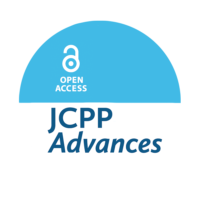Suicidal behaviour
-

Social connectedness and adolescent suicide risk
Open Access paper from the JCPP – ‘Despite evidence of the importance of interpersonal connectedness to our understanding of suicide risk, relatively little research has examined the protective and buffering effects of connectedness among adolescents.’ Alejandra Arango (pic) et al.
Read more -

Evidence Synthesis Studies, and Autonomic Dysregulation and Self-injurious Thoughts and Behaviour
In this Papers Podcast, Dr. Alessio Bellato discusses his JCPP Advances Special Issue Editorial ‘Evidence-based child and adolescent mental health care: The role of high-quality and transparently reported evidence synthesis studies’.
Alessio also co-authored a Research Review paper in the Special Issue entitled ‘Autonomic dysregulation and self-injurious thoughts and behaviours in children and young people: A systematic review and meta-analysis’, which will also be discussed.
Read more -

Common Elements in Treatments for Youth Suicide Attempts and Self-harm
(TRIGGER WARNING: Please be aware that this podcast explores themes around the topics of self-harm and suicide.)
In this Papers Podcast, Dr. Jocelyn Meza discusses her co-authored JCPP paper ‘Practitioner Review: Common elements in treatments for youth suicide attempts and self-harm – a practitioner review based on review of treatment elements associated with intervention benefits’. Jocelyn is the lead author.
Read more -

Brain grey and white matter structural associations with future suicidal ideation and behaviors in adolescent and young adult females with mood disorders
Open Access from JCPP Advances – “To reduce suicide in females with mood disorders, it is critical to understand brain substrates underlying their vulnerability to future suicidal ideation and behaviors (SIBs) in adolescence and young adulthood”. Lejla Colic et al.
Read more -

Incidence and outcomes of eating disorders during the pandemic: what has changed?
During the pandemic, the NHS CAMH eating disorder services saw almost a doubling in the number of referrals for eating disorders and waiting list times are now surpassing what is recommended. This surge in eating disorder presentations in clinical settings led researchers to wonder what impact, if any, Covid-19 had on the incidence of eating disorders in young people.
Read more -

Suicidal ideation during adolescence: The roles of aggregate genetic liability for suicide attempts and negative life events in the past year
Open Access paper from the JCPP – “Suicidal thoughts and behaviors (STB) constitute a central public health concern in adolescence. Previous studies emphasized the difficulty to cope with negative life events during adolescence as a risk factor for STB”. Séverine Lannoy (pic) et al.
Read more -

How isolation and secrecy fuel the self-harm flames
During Mental Health Awareness month in May 2022 – focused on the role of loneliness – Nip in the Bud listened to experts and those who have been through it to understand the vicious cycle of trying to cope alone. (TRIGGER WARNING: Please be aware that this blog discusses self-harm, including personal experiences of self-harm.) This blog was published by Nip in the Bud on 27 May 2022.
Read more -

CAMH Editorial: Volume 26, Issue 4, November 2021
Supporting children and young people (CYP) who self-harm (SH) is an important work of Child and Adolescent Mental Health Services (CAMHS). This theme is reflected throughout this issue.
Read more -

Conflating risk and mental illness
In this thoughtful article, a young person, Anna, reflects on her experience of risk being conflated with mental illness in child and adolescent mental health services (CAMHS), highlighting crucial lessons for clinicians, commissioners, and policy makers.
Read more -

Environmental factors linked with identifying as a sexual minority may increase suicidality risk
Adolescents who identify as a sexual minority (e.g., gay/lesbian, bisexual) are at an increased risk for suicidality compared to their heterosexual counterparts.1 Until now, inherent limitations in study design has meant that the extent of this association has been unclear.
Read more